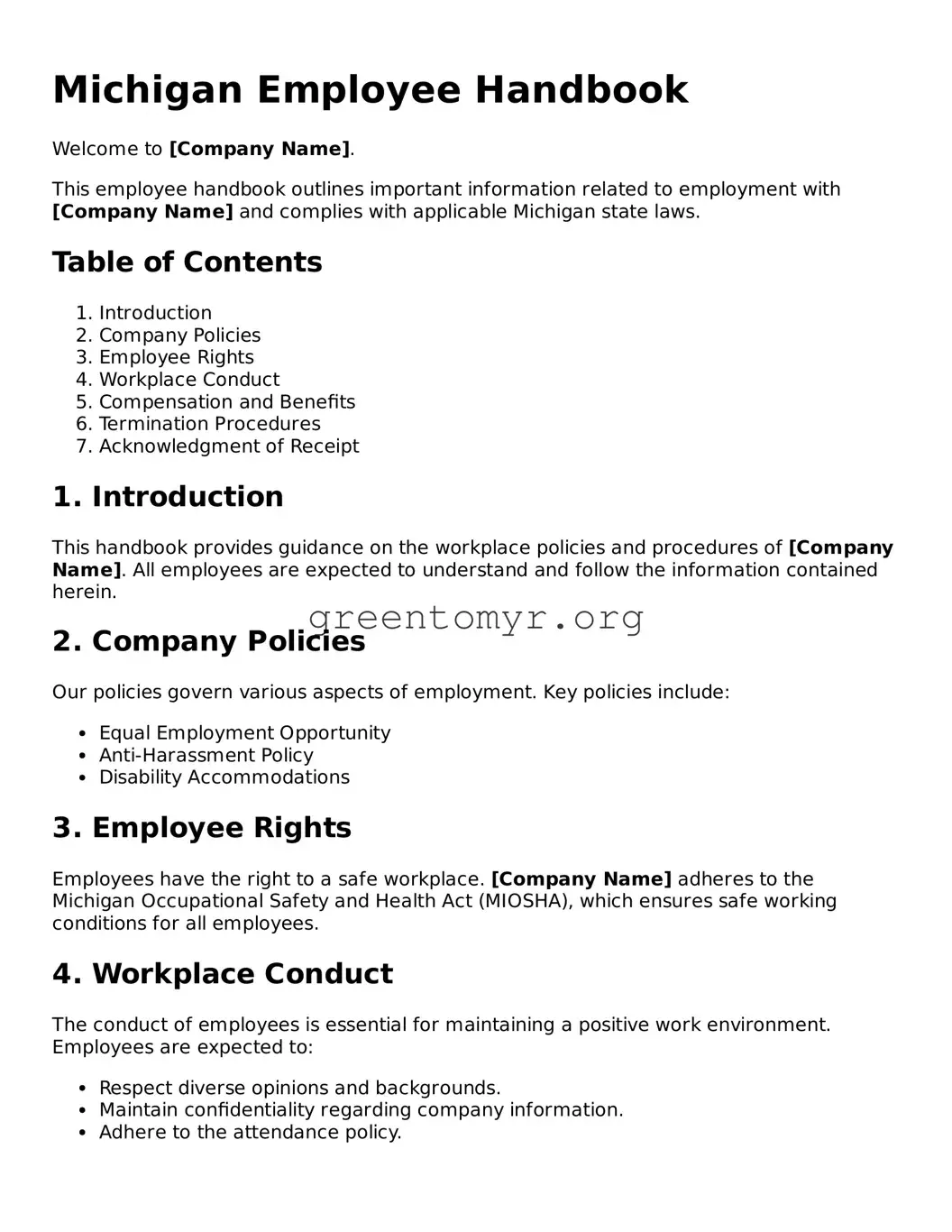Michigan Employee Handbook
Welcome to [Company Name].
This employee handbook outlines important information related to employment with [Company Name] and complies with applicable Michigan state laws.
Table of Contents
- Introduction
- Company Policies
- Employee Rights
- Workplace Conduct
- Compensation and Benefits
- Termination Procedures
- Acknowledgment of Receipt
1. Introduction
This handbook provides guidance on the workplace policies and procedures of [Company Name]. All employees are expected to understand and follow the information contained herein.
2. Company Policies
Our policies govern various aspects of employment. Key policies include:
- Equal Employment Opportunity
- Anti-Harassment Policy
- Disability Accommodations
3. Employee Rights
Employees have the right to a safe workplace. [Company Name] adheres to the Michigan Occupational Safety and Health Act (MIOSHA), which ensures safe working conditions for all employees.
4. Workplace Conduct
The conduct of employees is essential for maintaining a positive work environment. Employees are expected to:
- Respect diverse opinions and backgrounds.
- Maintain confidentiality regarding company information.
- Adhere to the attendance policy.
5. Compensation and Benefits
[Company Name] provides competitive compensation. Employees are eligible for:
- Health insurance
- Pension plan
- Paid time off
6. Termination Procedures
The process for termination of employment is outlined here. Employees may be terminated based on:
- Poor performance
- Violation of company policies
- Voluntary resignation
7. Acknowledgment of Receipt
Please sign and return the acknowledgment form below:
I acknowledge that I have received a copy of the [Company Name] Employee Handbook.
Employee Name: _____________________
Date: _____________________
For questions or clarifications about this handbook, please reach out to [Contact Person/Department] at [Contact Information].
